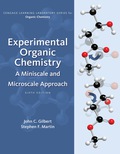
Concept explainers
(a)
Interpretation:Structure of the alcohol that would be the major product of acid-catalyzed hydration should be written.

Concept introduction:Acid-catalyzed hydration is the electrophilic addition of water. The reactive species that act as a catalyst are
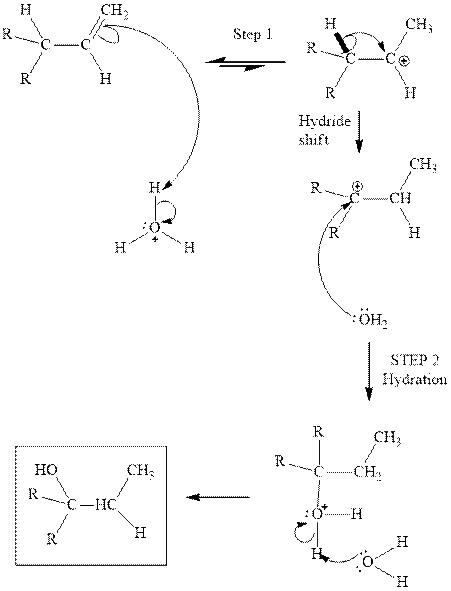
(b)
Interpretation: Structure of the alcohol that would be the major product of acid-catalyzed hydration should be written.

Concept introduction:Acid-catalyzed hydration is the electrophilic addition of water. The reactive species that act as a catalyst are
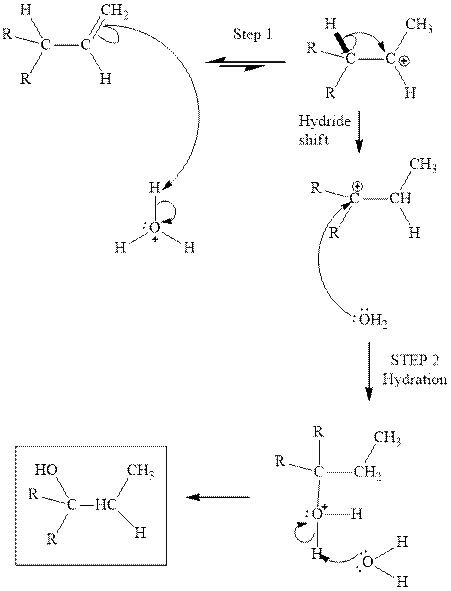
(c)
Interpretation: Structure of the alcohol that would be the major product of acid-catalyzed hydration should be written.

Concept introduction:Acid-catalyzed hydration is the electrophilic addition of water. The reactive species that act as a catalyst are
in the first stage. In the second stage, water itself acts as a nucleophile and another water abstracts a proton to give final hydration product as illustrated below.
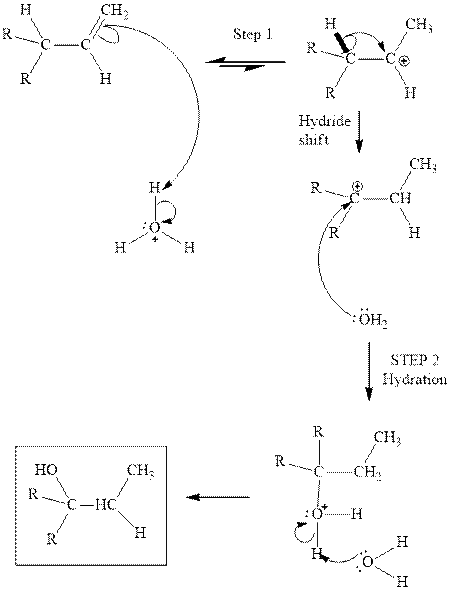
(d)
Interpretation: Structure of the alcohol that would be the major product of acid-catalyzed hydration should be written.

Concept introduction:Acid-catalyzed hydration is the electrophilic addition of water. The reactive species that act as a catalyst are
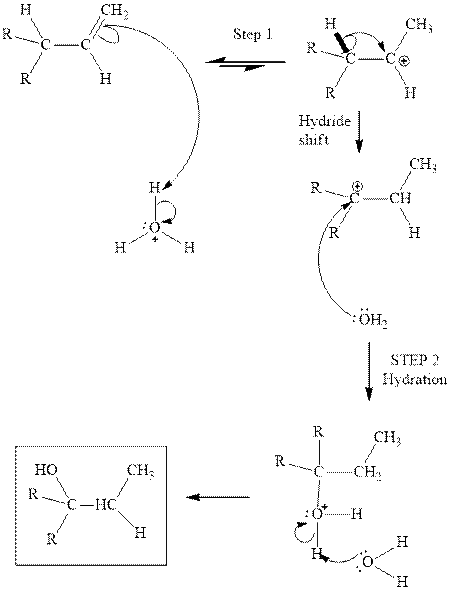
(e)
Interpretation: Structure of the alcohol that would be the major product of acid-catalyzed hydration should be written.
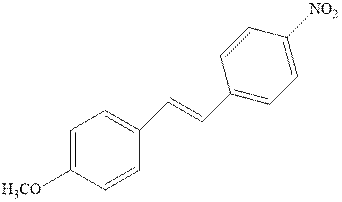
Concept introduction:Acid-catalyzed hydration is the electrophilic addition of water. The reactive species that act as a catalyst are
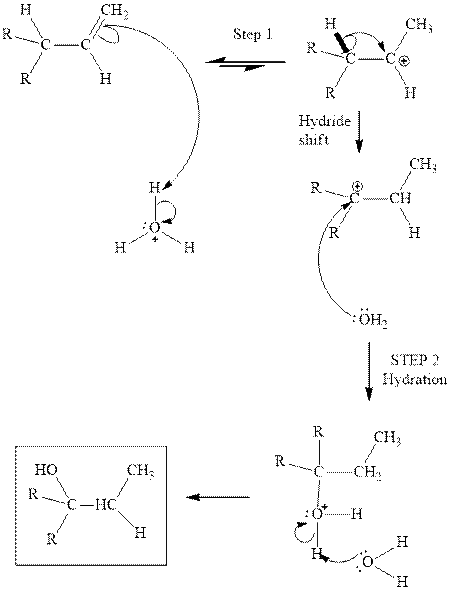
Want to see the full answer?
Check out a sample textbook solution
Chapter 10 Solutions
EBK EXPERIMENTAL ORGANIC CHEMISTRY: A M
- What is the name of the following compound? SiMe3arrow_forwardK Draw the starting structure that would lead to the major product shown under the provided conditions. Drawing 1. NaNH2 2. PhCH2Br 4 57°F Sunny Q Searcharrow_forward7 Draw the starting alkyl bromide that would produce this alkyne under these conditions. F Drawing 1. NaNH2, A 2. H3O+ £ 4 Temps to rise Tomorrow Q Search H2arrow_forward
 Organic ChemistryChemistryISBN:9781305580350Author:William H. Brown, Brent L. Iverson, Eric Anslyn, Christopher S. FootePublisher:Cengage Learning
Organic ChemistryChemistryISBN:9781305580350Author:William H. Brown, Brent L. Iverson, Eric Anslyn, Christopher S. FootePublisher:Cengage Learning
